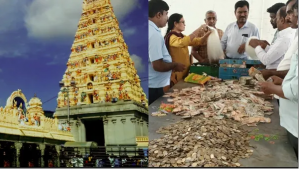ForumIAS announcing GS Foundation Program for UPSC CSE 2025-26 from 19 April. Click Here for more information.
ForumIAS Answer Writing Focus Group (AWFG) for Mains 2024 commencing from 24th June 2024. The Entrance Test for the program will be held on 28th April 2024 at 9 AM. To know more about the program visit: https://forumias.com/blog/awfg2024
Source– This post on “Karnataka Temple Bill Controversy: How States manage temple revenues” is based on the article “Row over Karnataka temple Bill: What changes it proposed, how other states manage temple revenues” published in “The Indian Express” on 28th February 2024.
Why in the News?
The Karnataka Hindu Religious Institutions and Charitable Endowments (Amendment) Bill, 2024, which regulates the taxation of Hindu temples, was recently rejected in the Legislative Council.
What controversy has erupted regarding the bill?

1. Aim– The Bill aimed to change various sections of the Karnataka Hindu Religious Institutions and Charitable Endowments Act, 1997.
2. Gross Vs Net income of temples– The main point of contention was the proposal to allocate “10% of the gross income of institutions earning over Rs 1 crore annually” to a common pool for temple maintenance, rather than the current rule of “10% of the net income of institutions earning over Rs 10 lakh annually”
Note– Net income is what remains after deducting expenses from the temple’s earnings, while gross income represents the total amount of money the temple earns.
3. Additionally, the Bill allocated 5% of the earnings of institutions making between Rs 10 lakh and Rs 1 crore to the common pool, altering the prior income range from Rs 5 lakh to Rs 10 lakh.
4. Impact– If the recent changes had been approved, they would have resulted in an additional Rs 60 crore from 87 temples earning over Rs 1 crore and 311 temples earning over Rs 10 lakh.
5. Accusation– The opposition party has accused the current Karnataka government of trying to “steal” from temples and questioned why only Hindu temples were singled out.
6. Counter– However, the government counters by stating that the increased funds would be used to support poorer temples, provide benefits to sick priests, and offer scholarships for the children of priests’ families.
How do other states manage temple income?
Kerela:
a. In kerela temples are often managed by state-run Devaswom (temple) Boards.
b. These boards are managed by government-appointed nominees, many of whom are politicians.
c. Each Devaswom Board receives a budget from the state government and is not obliged to disclose revenue figures.
What is the need for government regulation?
1. Recommendation– In 1960, the Government of India formed the Dr. C. P. Ramaswami Aiyar Commission to investigate issues related to Hindu Public Religious Endowments.
2. Constitutional authority – The framers of our Constitution granted states limited control over religious matters through Article 25(2).
Note– Article 25(2) of the Indian Constitution states that the state can regulate or restrict any economic, financial, political, or other secular activity associated with religious practices to ensure public order, morality, and health.
UPSC Syllabus- Polity and Nation (Bills & Acts)




